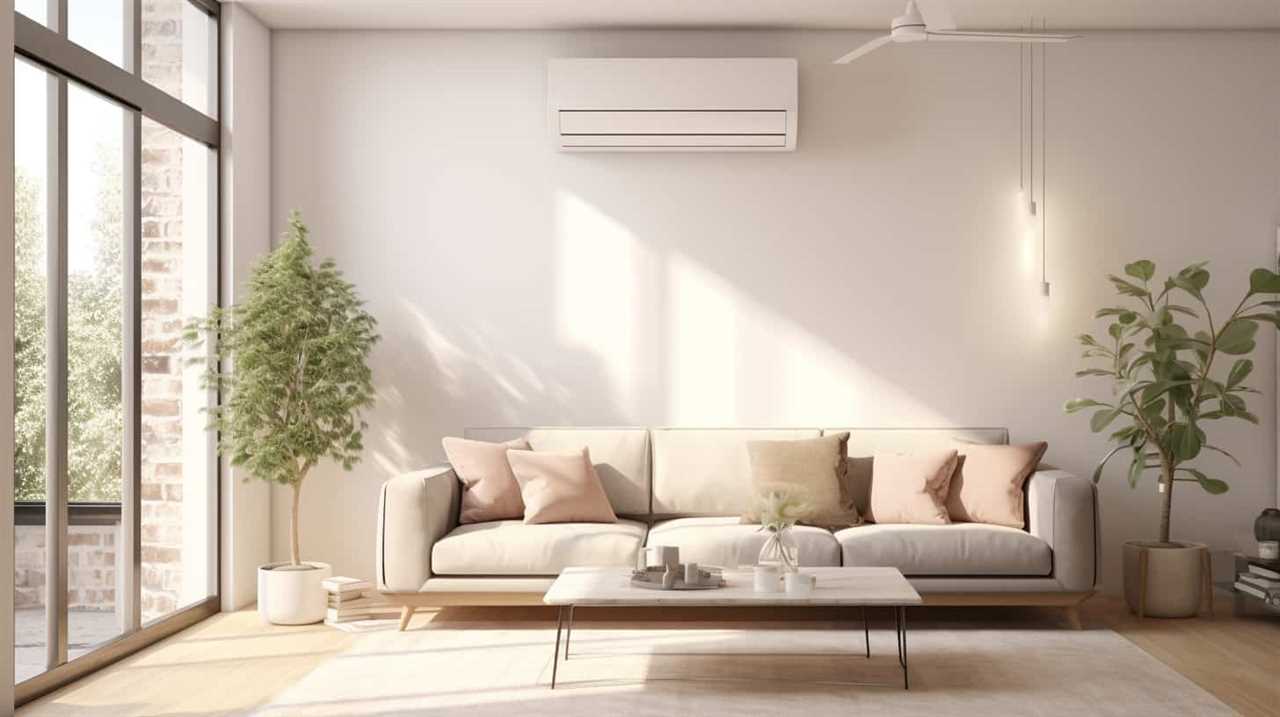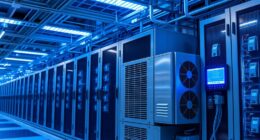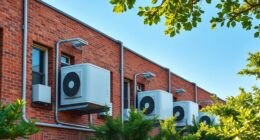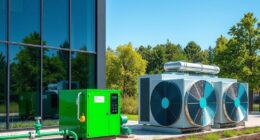Do you feel frustrated with high utility bills and inefficient heating and cooling systems? We have the solution for you.
In this article, we’re diving deep into the secrets of heat pump efficiency. We’ll uncover the mysteries behind the COP, explore the factors that affect efficiency, and provide you with tips to maximize your system’s performance.
Join us as we unlock the potential of high-efficiency heat pumps and help you save energy and money. Let’s get started!
Key Takeaways
- Heat pump efficiency is determined by the ratio of heat output to energy input.
- Factors such as the type of refrigerant, unit size, and building insulation affect energy efficiency.
- The COP (Coefficient of Performance) is used to measure the efficiency of a heat pump.
- Climate, temperature range, humidity, wind exposure, and solar radiation all impact heat pump efficiency.
The Basics of Heat Pump Efficiency
As we delve into the topic of heat pump efficiency, it’s important to understand the basics.

Heat pump effectiveness refers to how well a heat pump can transfer heat from one location to another. This is measured by its energy efficiency, which is the ratio of the heat output to the energy input. A more efficient heat pump will produce more heat for the same amount of energy consumed.
There are several factors that can affect the energy efficiency of a heat pump, such as the type of refrigerant used, the size of the unit, and the insulation of the building. It’s crucial to consider these factors when choosing a heat pump, as a more efficient one can save on energy costs and reduce environmental impact.
Understanding the COP (Coefficient of Performance)
We can gain a better understanding of the COP (Coefficient of Performance) by examining how it represents the ratio of heat output to energy input in a heat pump.
The COP calculation is essential in determining the efficiency of a heat pump and its ability to transfer heat from a lower temperature source to a higher temperature destination.
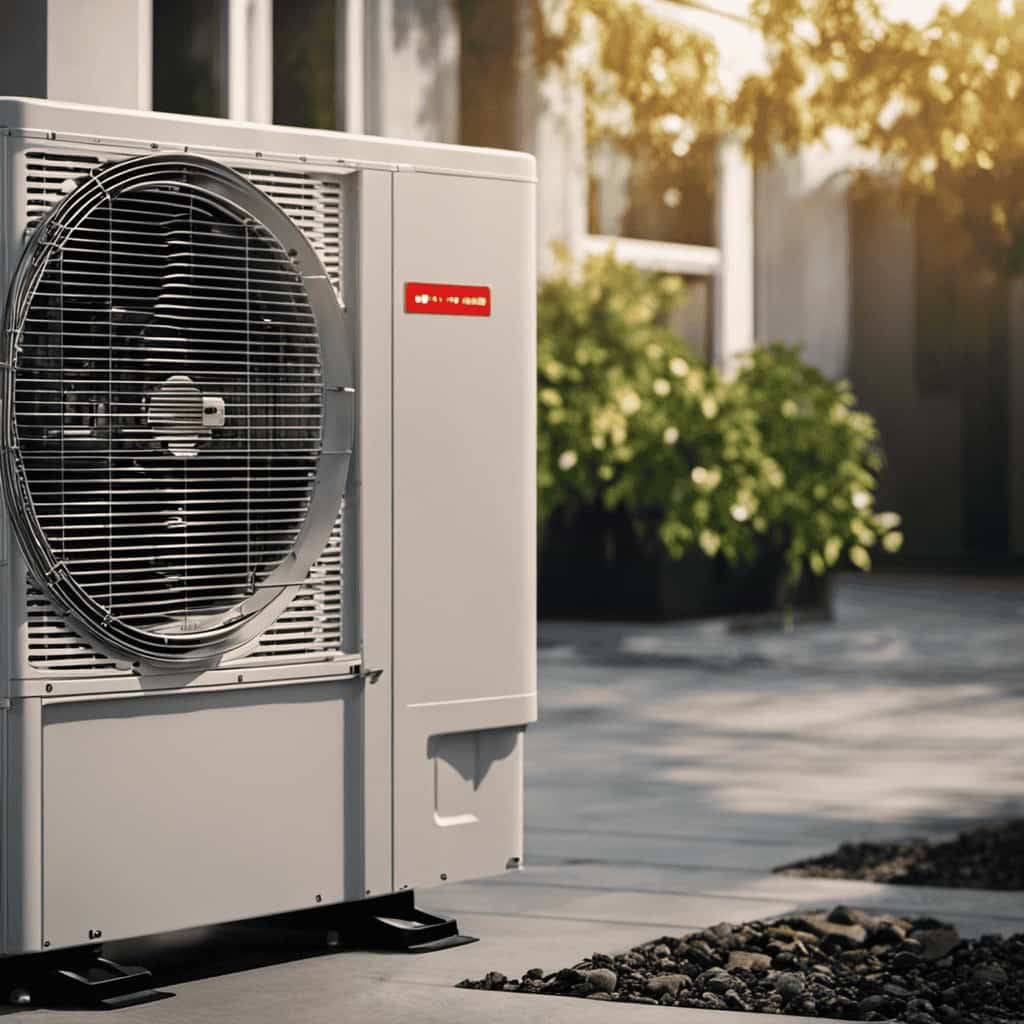
Here’s a breakdown of the COP calculation:
-
Heat Output: The amount of heat energy produced by the heat pump, measured in BTUs or kilowatts.
-
Energy Input: The amount of energy consumed by the heat pump, typically measured in kilowatt-hours (kWh).
-
COP Value: The ratio of heat output to energy input, indicating the efficiency of the heat pump. A higher COP value indicates greater efficiency.
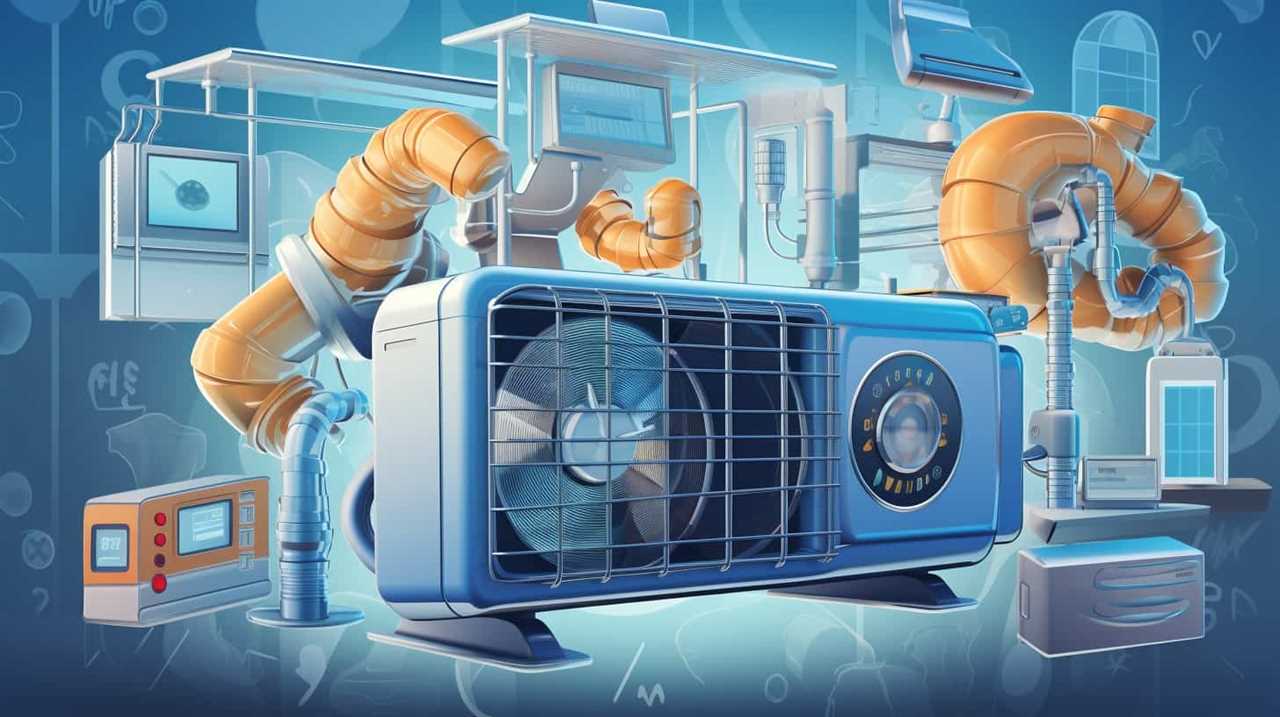
-
Heat Pump Efficiency Measurements: COP values can vary depending on the operating conditions, such as the temperature difference between the heat source and the destination. It’s important to consider these measurements when evaluating the overall efficiency of a heat pump system.
Factors Affecting Heat Pump Efficiency
When it comes to heat pump efficiency, several factors come into play.
First, the climate and location of the installation site can greatly impact the performance of the heat pump.
Secondly, the size and capacity of the heat pump need to be carefully considered to ensure optimal efficiency.

Lastly, regular maintenance and upkeep are crucial to maintaining the efficiency of the heat pump over time.
Climate and Location
One of the key factors that affects heat pump efficiency is the specific climate and location in which it’s installed. The impact of the location and climate variations on the performance of a heat pump can’t be underestimated.
Here are four important aspects to consider:
-
Temperature range: The heat pump’s efficiency depends on the temperature difference between the outside air and the desired indoor temperature. In colder climates, where the outdoor temperature drops significantly, the heat pump may have to work harder to extract heat from the air.

-
Humidity levels: High humidity can affect the heat pump’s ability to remove moisture from the air, reducing its overall efficiency. In humid climates, additional dehumidification may be required.
-
Wind exposure: Wind can impact the heat transfer process by either enhancing or hindering it. A heat pump installed in a location exposed to strong winds may experience faster heat exchange, leading to improved efficiency.
-
Solar radiation: The amount of sunlight a location receives can influence a heat pump’s efficiency. In areas with ample sunlight, a heat pump’s performance can be optimized through the use of solar panels or other solar-assisted technologies.
Considering these factors will help ensure that the heat pump operates at its highest efficiency, providing optimal comfort and energy savings in various climates and locations.
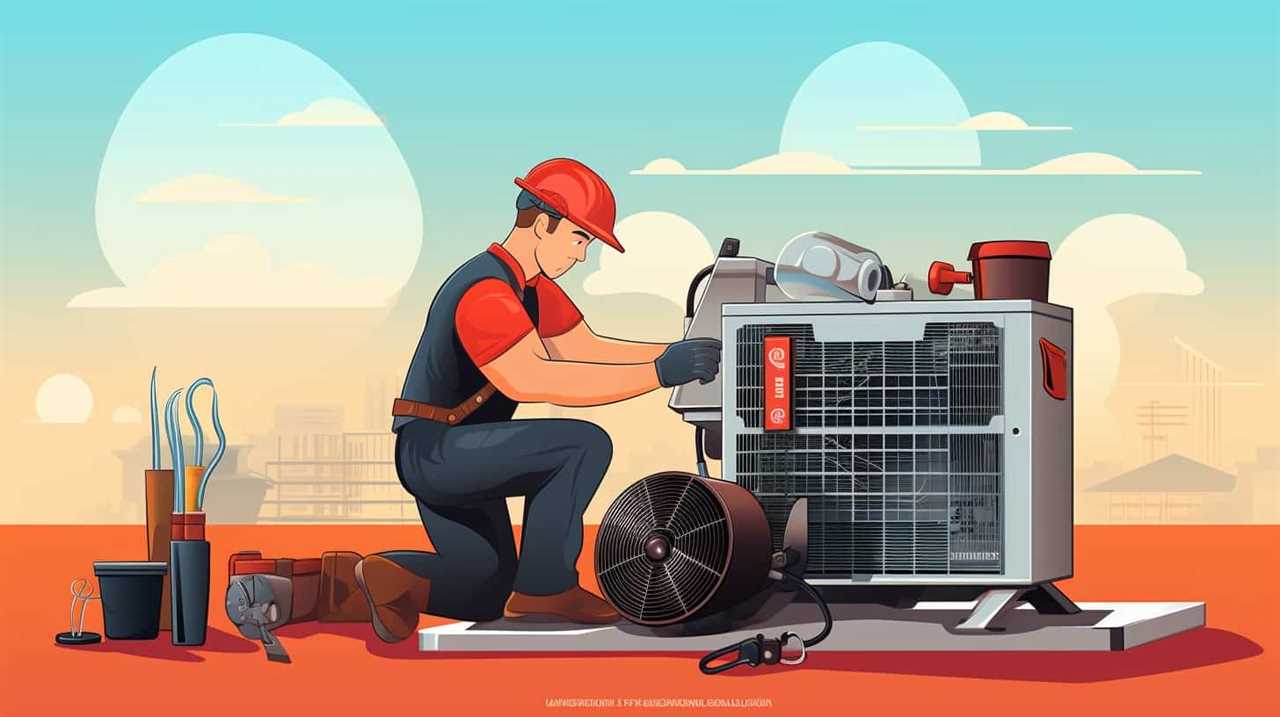
Size and Capacity
Size and capacity are crucial factors in determining the efficiency of a heat pump, and they can greatly impact its performance. When considering the size of a heat pump, it’s important to take into account the size of the space it will be heating or cooling. A heat pump that’s too small for the space will struggle to reach the desired temperature, while a heat pump that’s too large may cycle on and off frequently, leading to inefficiency and increased wear and tear.
Additionally, installation requirements must also be considered when determining the size and capacity of a heat pump. Factors such as available space, electrical requirements, and ventilation must be taken into account to ensure proper installation and optimal performance.
Regular Maintenance Requirements
Regular maintenance is essential for optimizing the efficiency of our heat pump and ensuring its long-term performance. To maintain our heat pump’s efficiency, we should follow a regular maintenance schedule and keep an eye out for any signs of trouble. Here are some troubleshooting tips to help us with our heat pump maintenance:
- Clean or replace air filters regularly to ensure proper airflow and prevent dust buildup.
- Check and clean the outdoor coil to remove any debris or dirt that may hinder heat exchange.
- Inspect and clean the indoor coil to improve heat transfer and prevent the accumulation of dirt and grime.
- Lubricate the fan motor and check the blower belt tension to ensure smooth operation.
By following these maintenance tips, we can optimize our heat pump’s efficiency and prolong its lifespan.
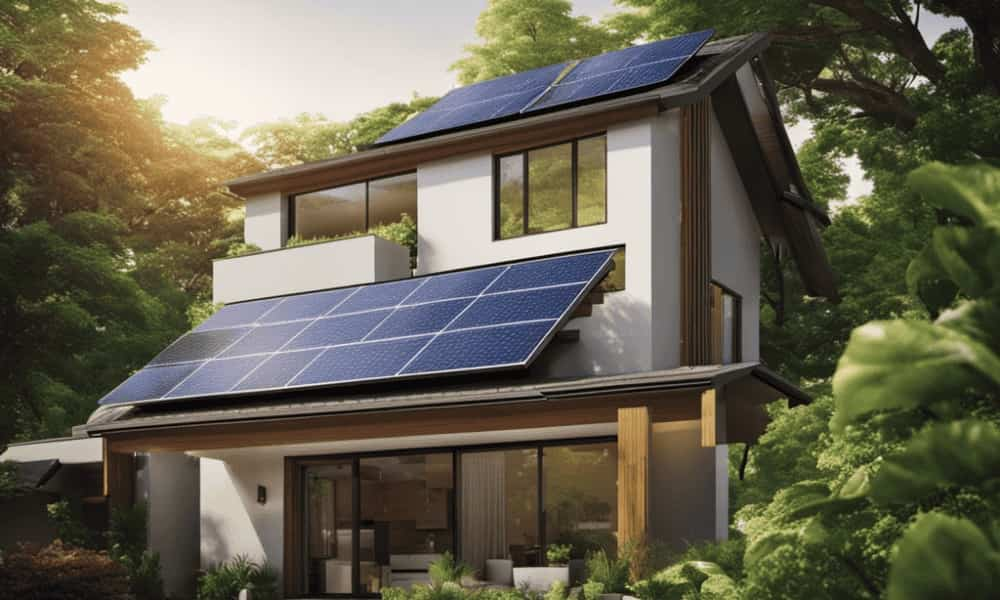
Now let’s move on to some tips for improving heat pump efficiency.
Tips for Improving Heat Pump Efficiency
To maximize our heat pump efficiency, we can follow these five simple tips.
First, it’s important to improve airflow around the unit. This can be done by removing any obstructions, such as furniture or curtains, that may hinder the flow of air. Additionally, regular cleaning of the air filters is crucial to ensure proper airflow.
Secondly, optimizing thermostat settings can greatly improve efficiency. Setting the thermostat at a moderate temperature, such as 68-72 degrees Fahrenheit, can help reduce energy consumption. Using a programmable thermostat can also be beneficial, as it allows you to adjust the temperature according to your schedule.

Lastly, sealing any air leaks in your home, such as around windows and doors, can prevent heat loss and improve overall efficiency.
Energy-saving Features of High-Efficiency Heat Pumps
We can maximize energy efficiency in high-efficiency heat pumps by utilizing their built-in energy-saving features. These features are designed to optimize performance and reduce energy consumption.
Here are four energy-saving features of high-efficiency heat pumps:
-
Variable-speed compressors: These advanced technology compressors adjust their speed according to the heating or cooling needs of the space. By operating at lower speeds when less heating or cooling is required, they consume less energy.

-
Smart thermostats: High-efficiency heat pumps often come equipped with smart thermostats that allow for precise temperature control. These thermostats can learn your preferences and adjust the temperature settings accordingly, ensuring optimal comfort while minimizing energy usage.
-
Two-stage or multi-stage operation: Heat pumps with two-stage or multi-stage operation can operate at different capacities depending on the heating or cooling demands. This allows them to operate more efficiently and avoid unnecessary energy consumption.
-
Enhanced insulation: High-efficiency heat pumps often feature improved insulation to minimize heat loss or gain. This helps maintain a consistent temperature and reduces the workload on the heat pump, resulting in higher energy efficiency.
Evaluating SEER and HSPF Ratings for Heat Pump Efficiency
When evaluating the efficiency of heat pumps, it’s crucial to understand the differences between SEER and HSPF ratings.
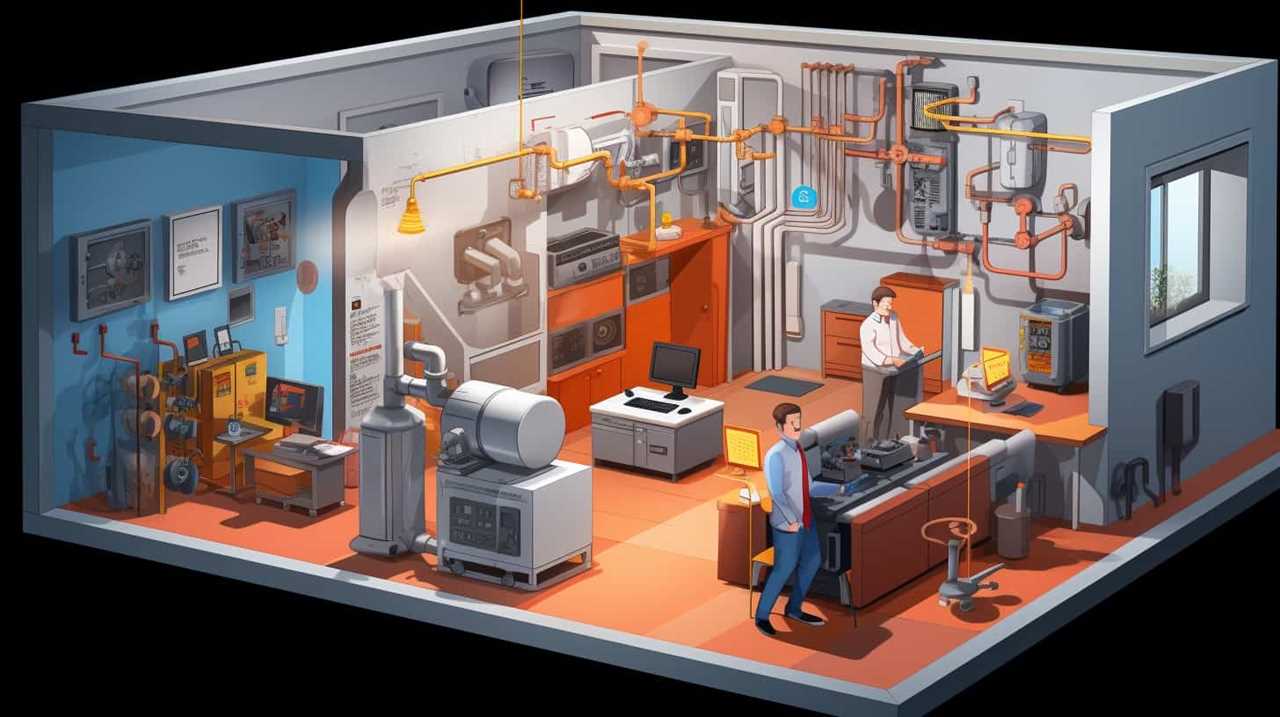
SEER measures the cooling efficiency, while HSPF measures the heating efficiency.
Both ratings are important as they determine how effectively the heat pump can cool or heat your home.
To maximize heat pump efficiency, it’s essential to choose a unit with high SEER and HSPF ratings.
SEER Vs HSPF: Differences
SEER and HSPF ratings provide valuable information for evaluating the efficiency of heat pumps. Understanding the differences between these two ratings can help homeowners make informed decisions about their heating and cooling systems. Here are four key differences between SEER and HSPF:
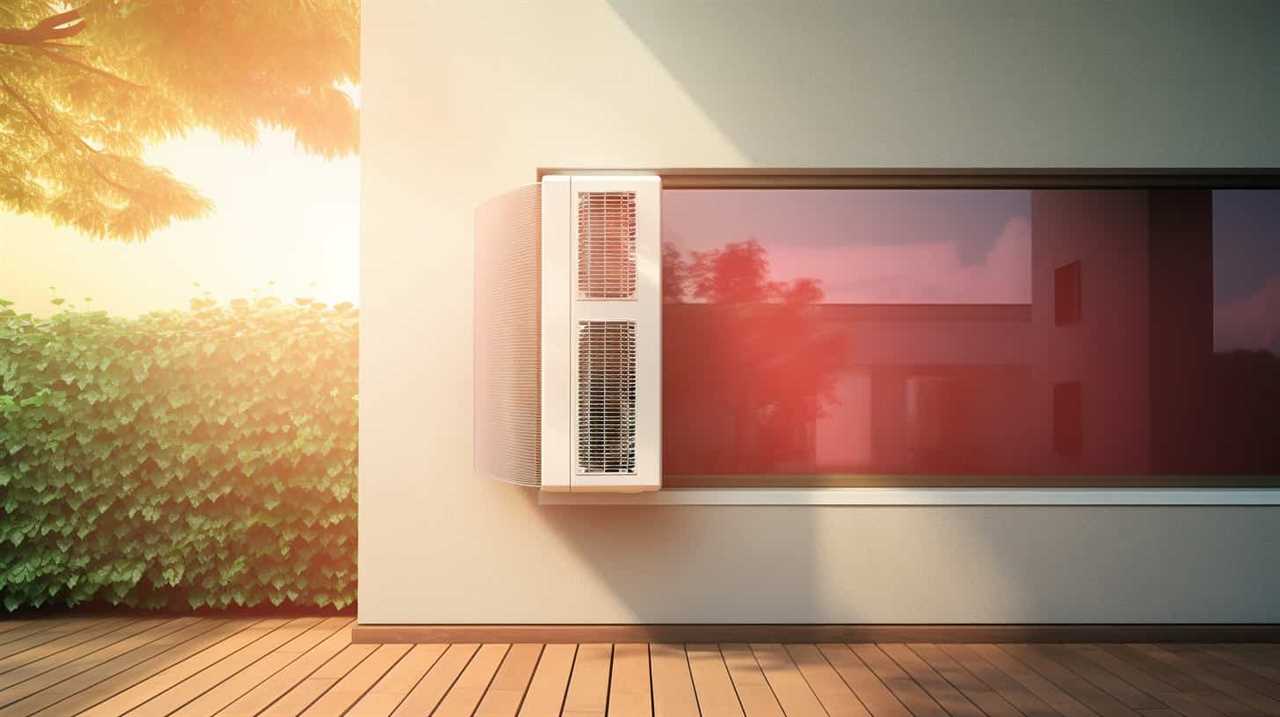
-
Energy consumption: SEER measures the cooling efficiency of a heat pump, while HSPF measures its heating efficiency. SEER ratings indicate how well the unit cools, while HSPF ratings indicate how efficiently it heats.
-
Heating performance: HSPF takes into account the heat pump’s performance in colder temperatures, making it a crucial factor in regions with colder climates.
-
Calculation method: SEER ratings are calculated based on the cooling output divided by the energy input, while HSPF ratings consider the total heating output divided by the total energy used.
-
Seasonal variations: SEER ratings are influenced by the temperature variations throughout the cooling season, while HSPF ratings consider the variations in temperature during the heating season.

Understanding these differences is vital for homeowners looking to maximize their heat pump’s efficiency. By considering both SEER and HSPF ratings, homeowners can choose a unit that meets their specific heating and cooling needs.
Now, let’s delve into the importance of high ratings and how they can impact energy savings.
Importance of High Ratings
High ratings consistently provide homeowners with a clear indication of the efficiency of their heat pump. When evaluating heat pump efficiency, two important ratings to consider are the Seasonal Energy Efficiency Ratio (SEER) and the Heating Seasonal Performance Factor (HSPF). These ratings not only help homeowners understand how well their heat pump performs, but also highlight the importance of regular maintenance to ensure optimal efficiency.
The SEER rating measures the cooling efficiency of a heat pump, while the HSPF rating assesses its heating efficiency. A higher SEER rating indicates better energy efficiency and lower operating costs during cooling seasons, while a higher HSPF rating signifies improved heating efficiency and reduced energy consumption during colder months.
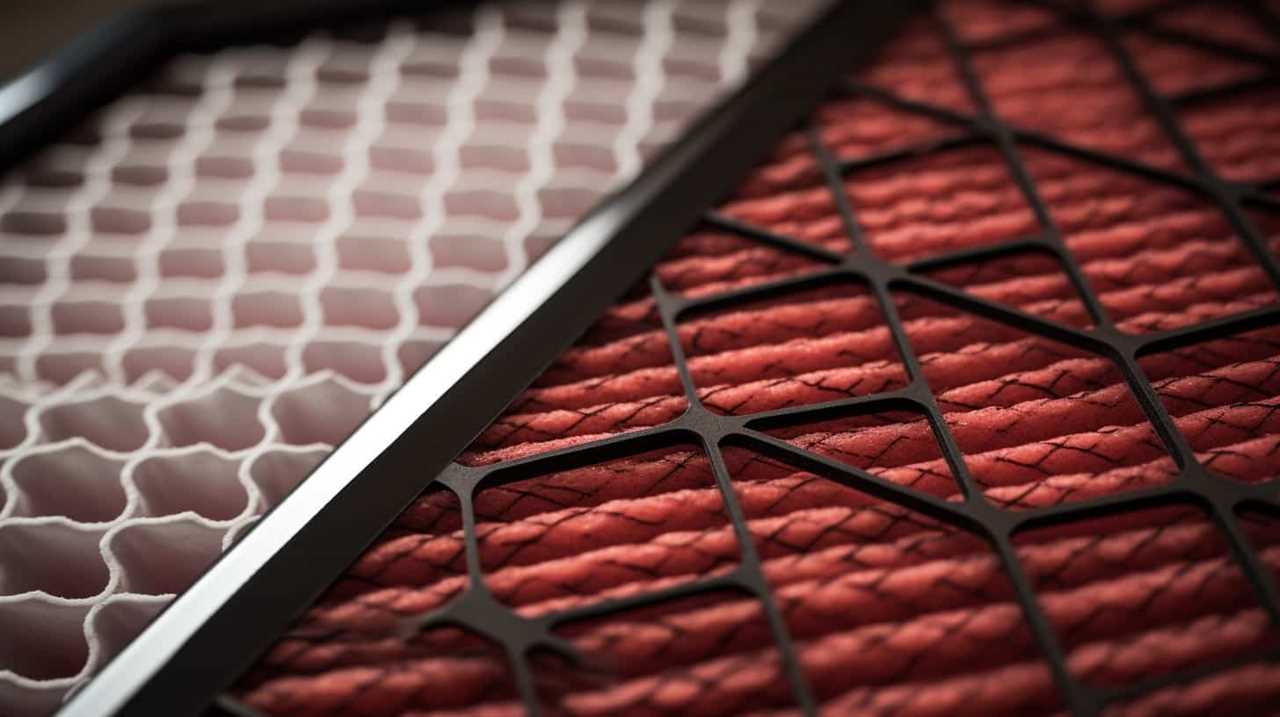
By investing in a heat pump with high SEER and HSPF ratings, homeowners can enjoy several benefits. Firstly, they can expect lower energy bills, as the heat pump operates more efficiently. Additionally, high ratings often indicate better comfort levels, with improved humidity control and consistent heating and cooling throughout the home.
To maintain the benefits of energy efficiency provided by high-rated heat pumps, regular maintenance is crucial. This includes cleaning or replacing filters, ensuring proper airflow, and scheduling professional maintenance checks. By keeping the heat pump in optimal condition, homeowners can maximize its efficiency and lifespan, while also reducing the risk of breakdowns and costly repairs.
Maximizing Heat Pump Efficiency
How can we evaluate the efficiency of a heat pump using SEER and HSPF ratings? When it comes to maximizing heat pump efficiency, understanding SEER (Seasonal Energy Efficiency Ratio) and HSPF (Heating Seasonal Performance Factor) ratings is essential.
Here are four key points to consider:

-
SEER rating: This measures the cooling efficiency of a heat pump. The higher the SEER rating, the more energy efficient the heat pump is during the cooling season.
-
HSPF rating: This measures the heating efficiency of a heat pump. A higher HSPF rating indicates better energy efficiency during the heating season.
-
Optimal SEER and HSPF ratings: To maximize efficiency, look for heat pumps with high SEER and HSPF ratings. Higher ratings mean lower energy consumption and potential cost savings.
-
Energy saving strategies: In addition to choosing a heat pump with high ratings, implementing energy saving strategies like proper insulation, regular maintenance, and smart thermostat usage can further optimize heat pump efficiency.

Common Myths and Misconceptions About Heat Pump Efficiency
Let’s debunk some common myths and misconceptions about heat pump efficiency.
One common myth is that heat pumps are noisy. While it’s true that some older models can be loud, modern heat pumps are designed to operate quietly. Manufacturers have made significant advancements in noise reduction technology, ensuring that heat pump noise levels are kept to a minimum.
Another misconception is that heat pump installation costs are exorbitant. While it’s true that the initial investment for a heat pump can be higher than other heating and cooling systems, it’s important to consider the long-term savings. Heat pumps are highly efficient and can significantly reduce energy bills, making them a cost-effective choice in the long run. Additionally, there are various financing options and incentives available to help offset installation costs, making heat pumps more accessible to homeowners.
Frequently Asked Questions
How Much Does a Heat Pump Cost to Install and Operate?
Heat pump installation expenses vary depending on factors like the type of heat pump and the size of the property. When compared to other heating systems, heat pumps can offer long-term savings on operating costs.
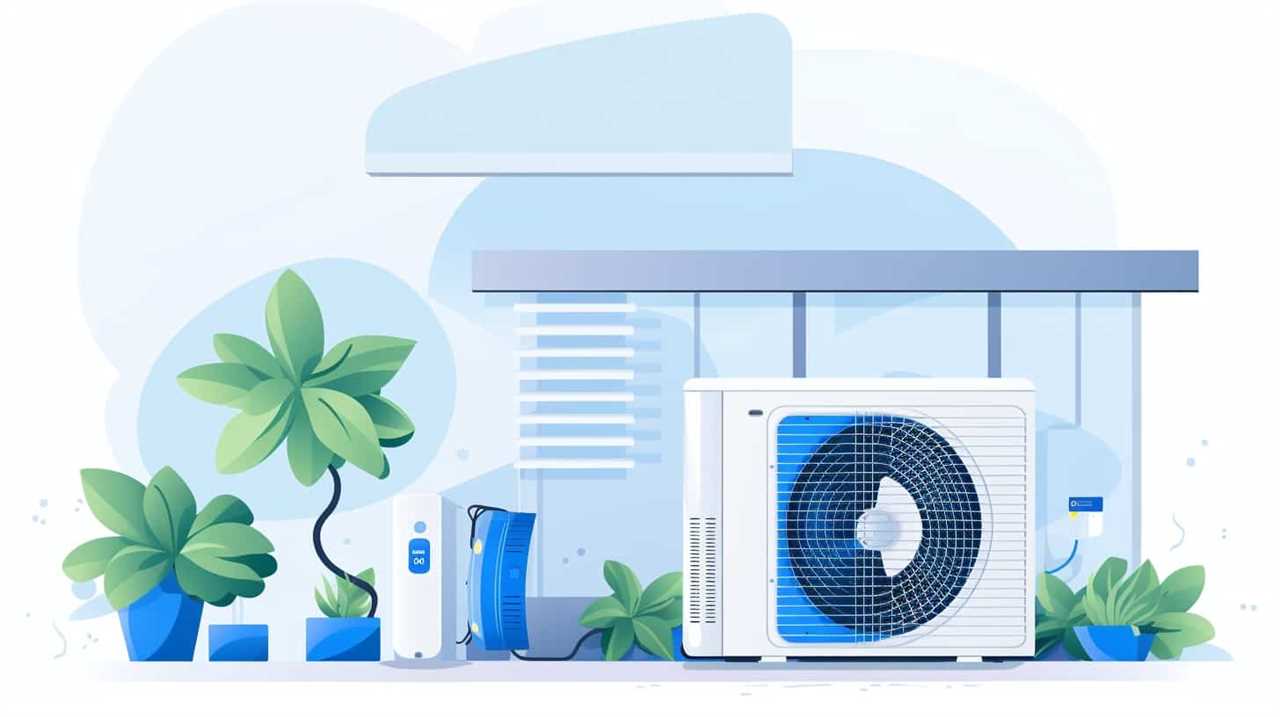
Are Heat Pumps Suitable for All Climates?
Heat pumps can be suitable for all climates, but their efficiency and performance may vary depending on factors such as temperature extremes, insulation, and system size. Understanding these factors is crucial for optimizing energy consumption and maximizing heat pump efficiency.
Can Heat Pumps Be Used for Both Heating and Cooling?
Yes, heat pumps can be used for both heating and cooling. Heat pump technology allows for the transfer of heat energy, making them energy efficient for both functions. They are a versatile and eco-friendly solution for maintaining comfortable indoor temperatures.
What Is the Average Lifespan of a Heat Pump?
The average lifespan of a heat pump depends on various factors, such as maintenance and signs of a failing system. Regular heat pump maintenance can prolong its lifespan, while recognizing signs of a failing unit allows for timely repairs or replacements.
Are There Any Government Incentives or Rebates Available for Installing a High-Efficiency Heat Pump?
Yes, there are government incentives and energy rebates available for installing a high-efficiency heat pump. These programs aim to encourage energy efficiency and help homeowners save money on their energy bills.

Conclusion
In conclusion, unlocking the secrets of heat pump efficiency is crucial for maximizing energy savings and reducing environmental impact. By understanding the basics of heat pump efficiency, such as the COP and factors affecting it, homeowners can make informed decisions to improve efficiency.
Energy-saving features and evaluating SEER and HSPF ratings also play a significant role. So, let’s dive into the world of heat pump efficiency, unraveling its mysteries and unlocking the potential for a more sustainable future.
It’s time to harness the power of heat pumps and ride the wave of energy efficiency.




